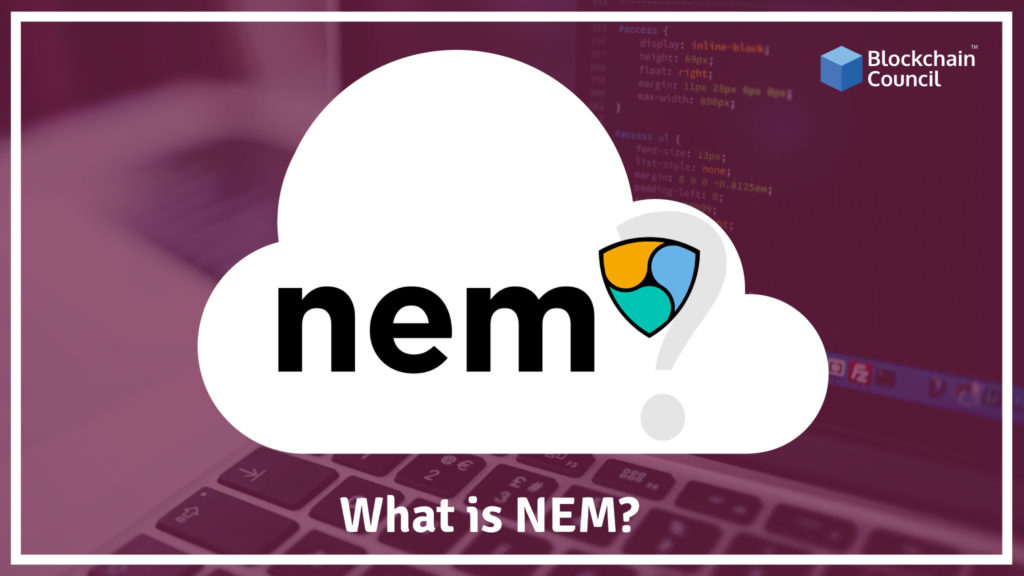
- Toshendra Kumar Sharma
- February 12, 2018
The 10th largest cryptocurrency by market cap, NEM, just had a significant bull run which more than doubled its price in less than a day. But until now NEM and its underlying digital asset, XEM, have remained slightly confusing to investors. Here’s a more in-depth look at what NEM is and aims to achieve in the future.
New Economy Movement
NEM, which stands for New Economy Movement is among a new generation of cryptocurrencies which aim to improve upon Bitcoin’s technical prowess. NEM’s is entirely original and has been written from scratch which already separates it from the plethora of Bitcoin copycats. Launched in 2015, it’s not only a digital currency but also a digital exchange and storage platform. In the future, it can be used to store stock information, medical records, mortgages, votes and any other file that can be stored on a computer. By saving these data on NEM’s blockchain, they become impervious to tampering and forever secured because of the underlying blockchain.
Vested Balance and Proof of Importance
NEM uses a Proof of Signature algorithm to select how a block is appended to the blockchain, and it is here where its first significant advantage over Bitcoin lies. Unlike Proof of Work and Proof of Stake, in Proof of Signature, there are no miners. Instead, some harvesters earn rewards based on not only how large their XEM stack is but also how many transactions they perform on the network. Harvesters collect fees based on their importance in the network which is determined by their “trust score” which can be increased by using the network more. Proof of Signature makes sure that people who use the network the most are the ones that get rewarded for it and in the process makes XEM transactions about 100x more energy efficient than those of Bitcoin.
One of the ways to become more critical to the network is by having what’s called a vested balance. If a user lets their XEM sit at an address for a long time, it becomes vested as it gets old. When a user has enough money vested, they start becoming important to the group. To gain importance, users need at least 10,000 XEM to have become vested by staying at the same address. It usually only takes a few weeks for a person’s balance to become vested. The process of becoming vested becomes significantly faster if a user has more than 100,000 XEM in their possession.
Namespaces and Mosaics
Namespaces and Mosaics are some of the unique features of NEM and could have interesting real-world applications. The simplest way to think about Namespaces is with an analogy to the domain names on the internet. So, a domain has to be at the lowest level of a derivation tree, also called the root. This where NEM comes in handy, as when a user creates a domain name on NEM, it becomes a unique domain in the NEM ecosystem. For example, if we create a unique Namespace “tosh,” we can create the unique identifier, “tosh.website” and no other user can create the same Namespace. Namespaces can have up to 3 levels, a Namespace, and its two sub-Namespaces.
Mosaics are also an exciting part of this domain service. A mosaic is like a file hosted on a domain and could represent an underlying asset like a stock or a mortgage. This is significant because Namespaces and mosaics can combine to create assets on the blockchain.
Upcoming Catapult Upgrade
NEM developers have been working for the past several months on a protocol upgrade for NEM which will shift NEM’s technology from JAVA to C++ for increased scalability and speed. It is currently being tested on a test network and is expected to hit the leading network in Q1 2018. Catapult has shown tremendous results so far with a maximum of over 4000 transactions per second and averaging over 3000 transactions per second.
With benchmarks like this, NEM blows its competition out of the water as Ethereum and Bitcoin are both struggling to perform over 15-20 transactions per second. This is why NEM is a viable solution for the long term because developers have focused on creating a highly customizable blockchain that can be used by enterprises and financial institutions for asset management. Because of NEM’s RESTful JSON API gateway, connection to other existing centralized or decentralized solutions like smart contract systems or payment gateways is much more accessible making its integration with existing software convenient which is crucial for mainstream adoption.





































































 Guides
Guides News
News Blockchain
Blockchain Cryptocurrency
& Digital Assets
Cryptocurrency
& Digital Assets Web3
Web3 Metaverse & NFTs
Metaverse & NFTs
